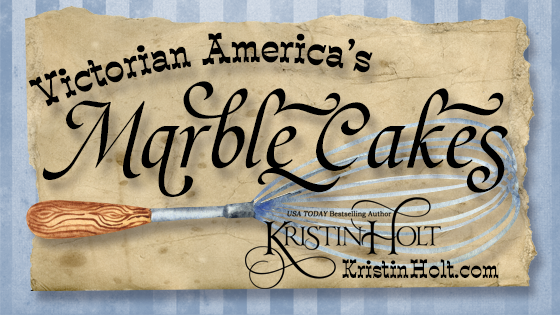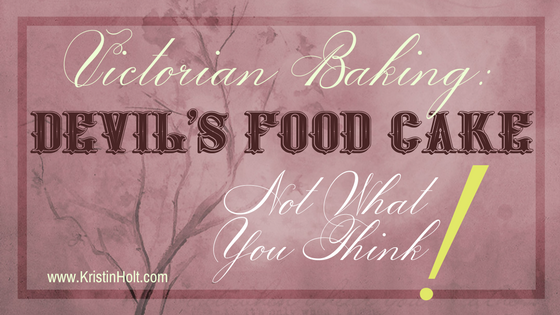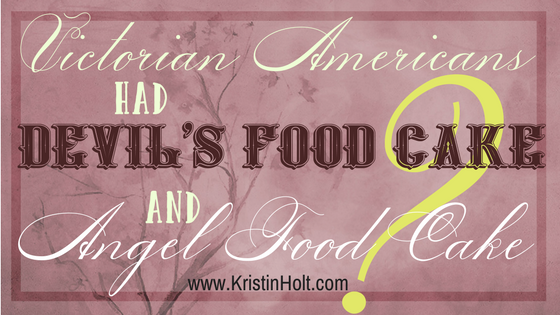
by Kristin Holt | Aug 13, 2021 | Articles
German immigrants brought Marmorkuchen–marble cake–to the United States. Vintage cook books and newspapers show spice-and-yellow cake batters swirled together. Late-nineteenth-century bakers began to swap spice cake for chocolate. Delicious vintage baking!

by Kristin Holt | Jan 27, 2018 | Articles
Today, January 27th, is National Chocolate Cake Day!
No better time to reflect upon, and relish the “invention” of one of the BEST chocolate cakes of all time–Devil’s Food Cake.
Devil’s Food Cake (often simply “Devil’s Food”) debuted along with other chocolate cakes as the culmination of chocolate dessert creations, at the tail-end of the Victorian Era, and gained momentum into the brief Edwardian period. American bakers discovered the capacities of baking chocolate, creating the sinfully rich and decadent cake, frosted with anything from a basic white, boiled frosting to ultra-sweet fudge frosting. Of all the “Victorian Inventions”, Devil’s Food Cake might be a twenty-first century favorite!

by Kristin Holt | Jan 26, 2018 | Articles
Which came FIRST in Victorian home kitchens? Angel’s Food Cake or Devil’s Food Cake? BOTH appeared in the 1800’s…but one was definitely first. Which is your guess?
This post begins a new blog series, all about Victorian home bakers, CAKE, Angel (Angel’s) Food Cake, Chocolate Cake (and Devil’s Food Cake), Cake Moulds and Tins, Time-saving Inventions for cooks / bakers, and more than one surprise!

by Kristin Holt | Sep 29, 2015 | Articles
This book review of an historic cookbook illuminates my reasons for a 4.5-star review. This vintage cookbook is so much more than a collection of historic recipes–it provides a peek into the homemaker’s roles, available ingredients, methods of food preparation and attitudes about waste, as well as regional favorites. Small elements–such as reference to measuring salt with a dessert spoon–explains much to amateur historians about the way things once were. Article includes one of the recipes from the book: cream pie with a rich pie crust.












